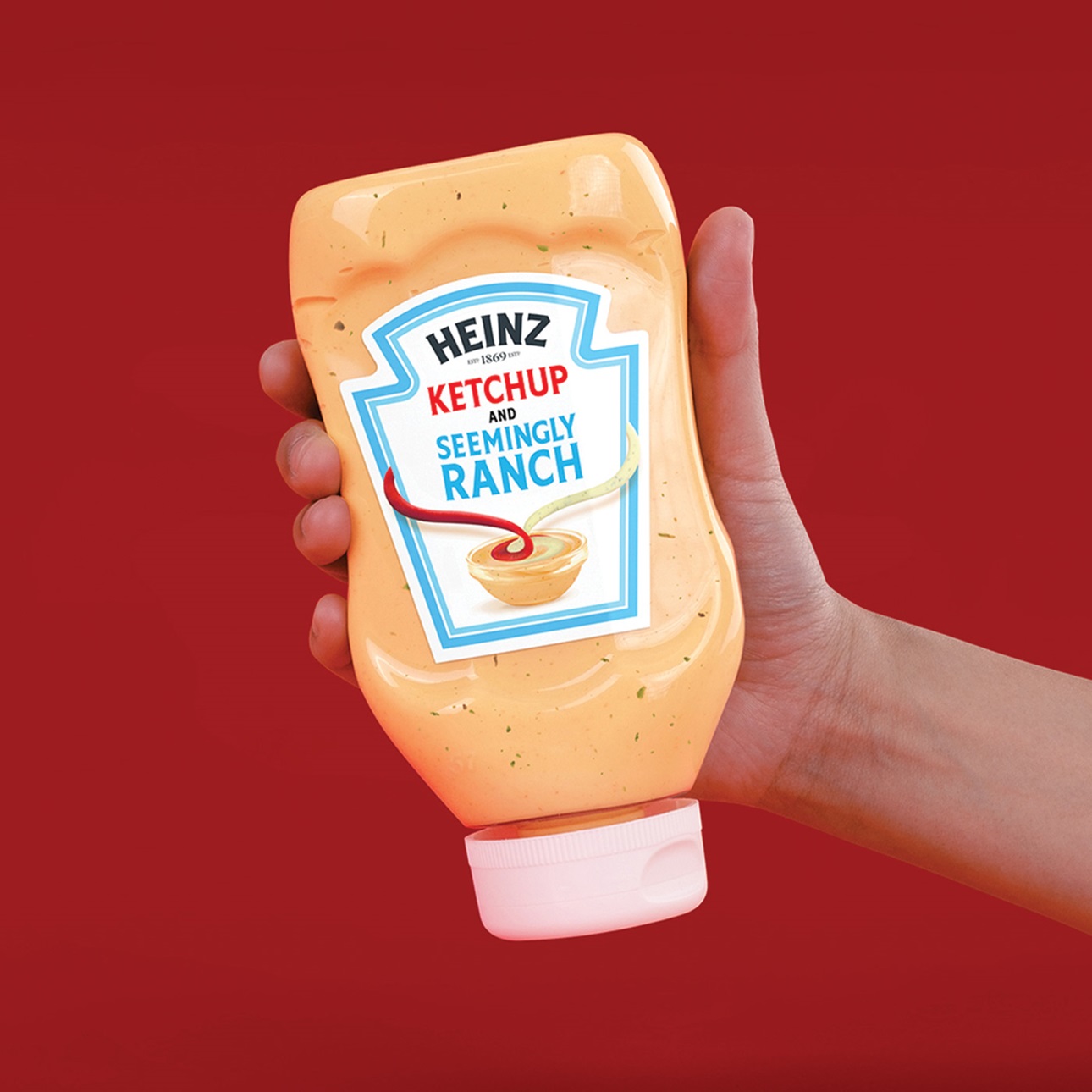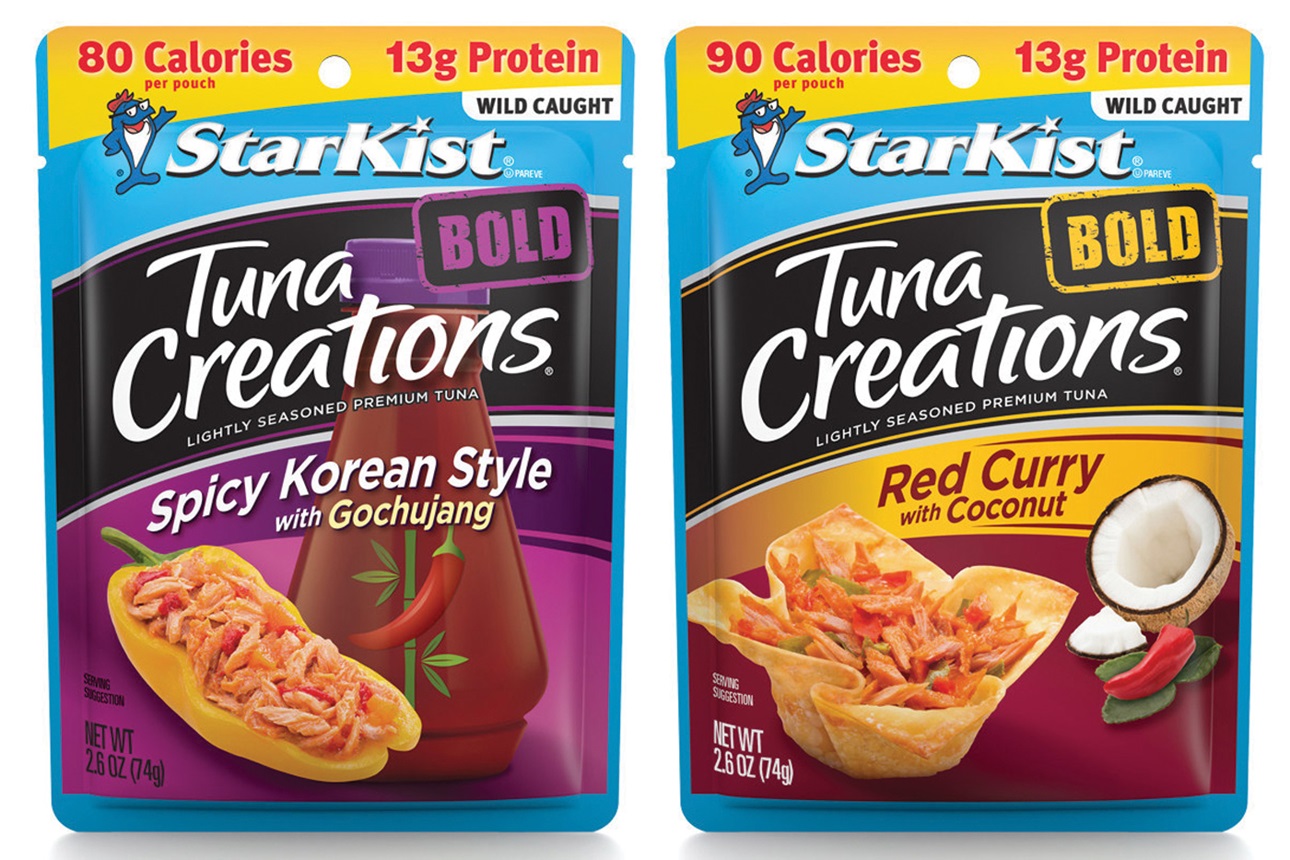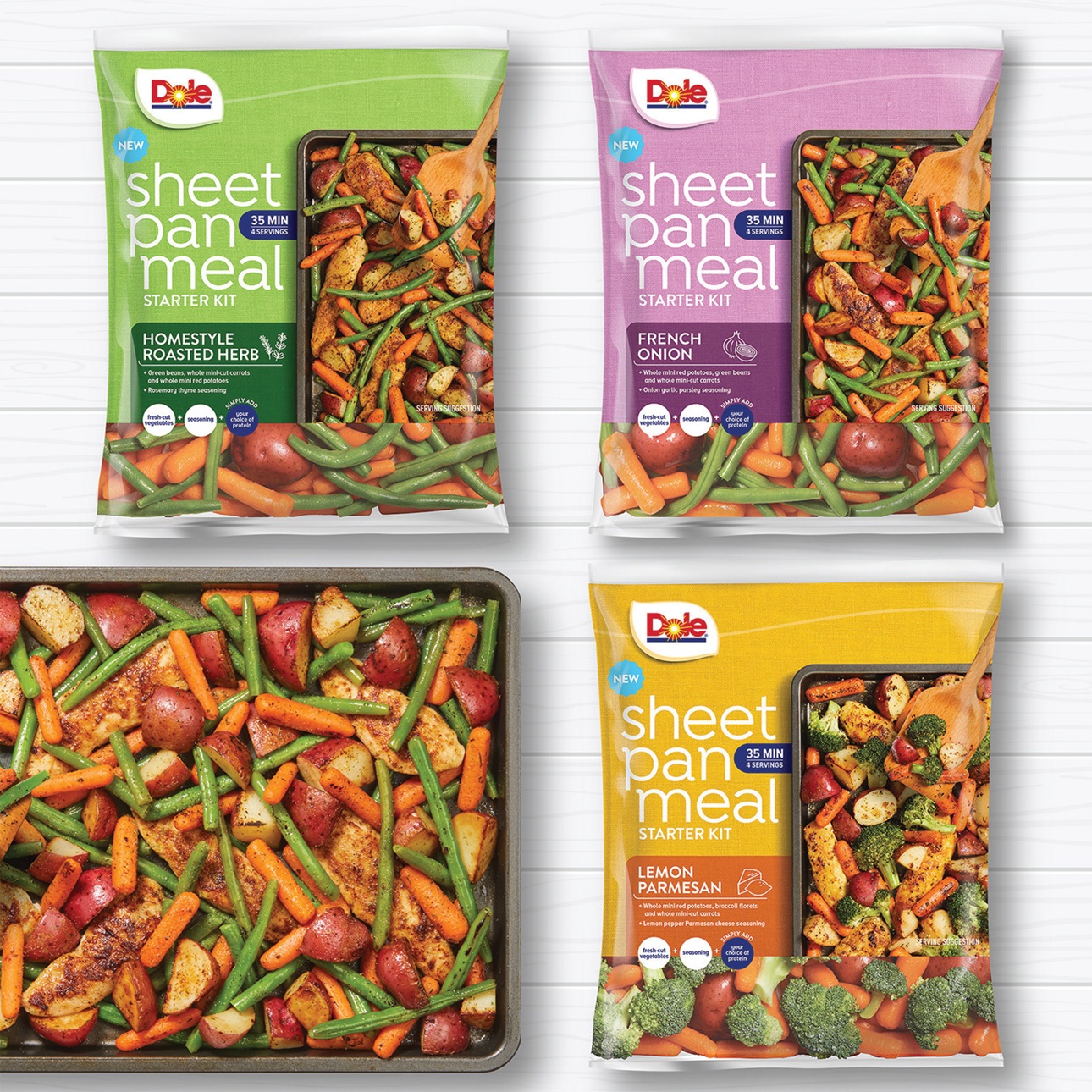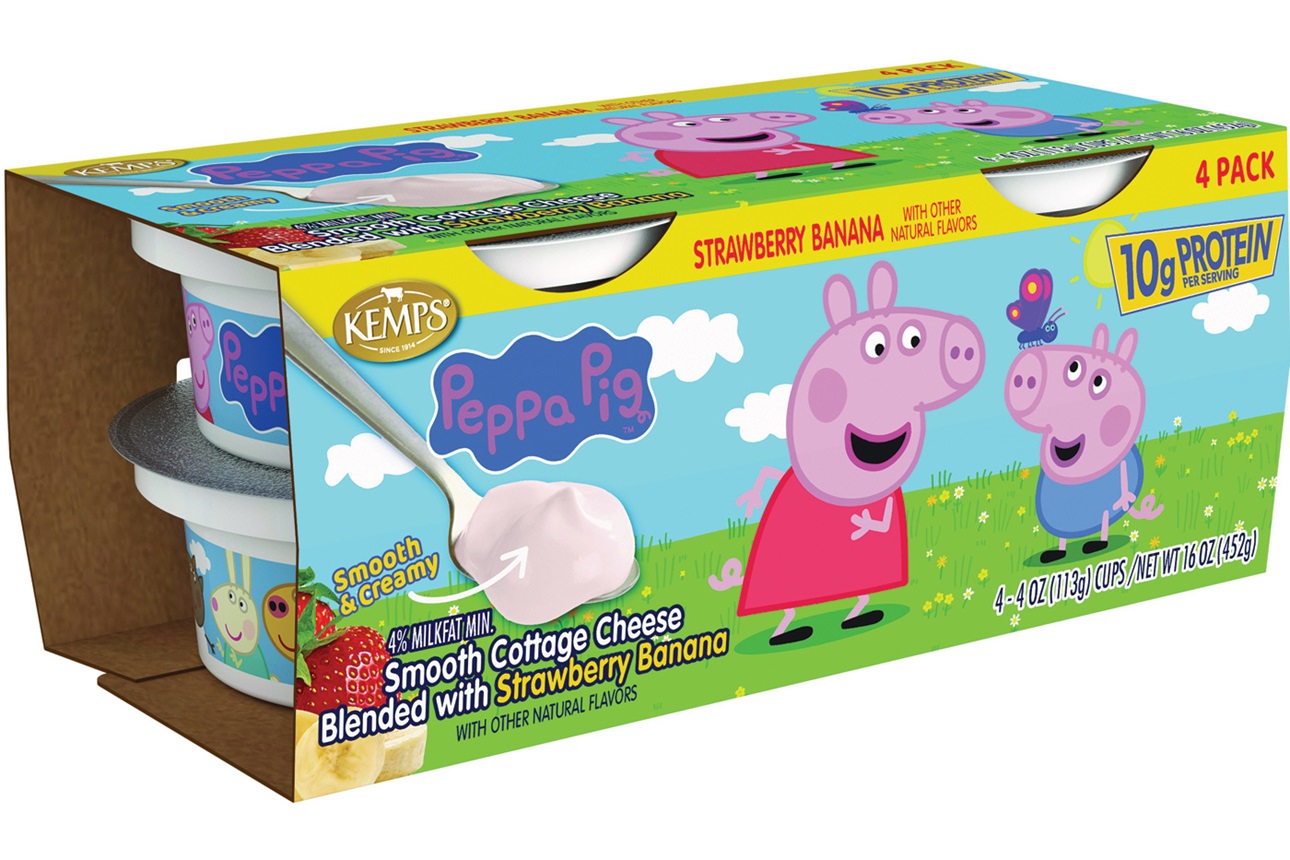Food Technology Magazine | Issues and Insights
Turning Social Chatter Into Product Insights
The vast social media universe offers a data-rich array of touchpoints with consumers that can also inform new food product development.

© d3sign/getty images
The seminal example showcasing social media’s influence on the food industry may have been Taylor Swift and Seemingly Ranch. It underscored for a worldwide audience how social platforms such as TikTok, Instagram, and Pinterest are influencing not just the marketing of CPG and restaurant fare but also which products are developed and introduced in the first place.
Last fall, food brands went all in with their reactions to photos of the pop-music star eating a chicken tender in a stadium luxury box with friends and relatives of U.S. football player Travis Kelce. Discerning consumers saw ketchup on her plate, yes, but also something that looked like ranch dressing.
That was all it took. Hidden Valley Ranch, the Clorox-owned iconic brand of ranch dressing, promptly renamed its X and Instagram accounts Seemingly Ranch after a fan-run Swift account on X said the white mystery substance was “seemingly ranch.” PepsiCo’s Lay’s snack brand promoted a “#fakeflavor” of Seemingly Ranch potato chips. And in the ultimate quick-twitch gambit, Kraft Heinz announced it was releasing 100 bottles of a limited-edition version of Ketchup and Seemingly Ranch sauce.
Andrew Csicsila says the industry is accelerating a trend that’s been in the making for several years. “CPG companies, particularly in food and beverage, are leveraging social media more than the public is actually aware of,” says the partner and managing director for AlixPartners consultancy.
Social “listening” and corporate reactions to social media have become a huge new facet of the food business in part because of how prominently foods and beverages figure in experimentation by internet influencers, in cooking shows, and in the lifestyles of ordinary Americans who’ve got more incentive to prepare food at home because of two years of high food-price inflation. Some companies respond only with marketing programs, but more are taking a logical leap beyond that, injecting social media input as a new and accelerating component of product development—sometimes at breakneck speed. This article is the first in a series in Food Technology that will look at the evolution of new product development.
Changing the Food Industry Paradigm
One key aspect of social media for brands is to create relationships with consumers that can become valuable two-way communication. “The work we do in social is a combination of direct connection to consumers and feedback loops,” says John Foraker, cofounder and CEO of Once Upon a Farm kids’ food company and cofounder of Annie’s Homegrown, a natural and organic food brand that was bought by General Mills. “Good companies are watching that in real time and scraping all the information they can. It’s essential to maintain empathy, understanding, and closeness to your consumer. We look for product ideas and things we can improve upon, and for inspiration.”
This process takes three main paths. The industry now pays thousands of humans lots of money to search diligently for marketing and product development opportunities suggested by social media. For example, picking up on a popular social meme among football fans about kicks that “doink” off the goalposts, Nestlé USA’s DiGiorno pizza brand conducted an online sweepstakes during the 2023 Super Bowl that would have awarded coupons for a free pizza if a kicker during the big game made that mistake.
Tapping into influencers has become a second major way companies are changing the food industry paradigm with social media. CPG and foodservice companies pay active and celebrity personalities to sample and demonstrate their products online, especially in videos. “Super influencers” can draw as much as $5,000 for 30 seconds of content on one of the prime social media sites, according to AlixPartners. Individuals with less “followership,” the firm says, can command a couple thousand.
“That price for millions of viewers is pretty cheap,” Csicsila says, especially compared with the cost of advertising. And sometimes—in serendipitous moments such as Seemingly Ranch—“a small circle of individuals creates a huge buzz that isn’t planned, and a lot of the best ideas and lessons learned are from unplanned organic activities.”
AI Takes ‘Listening’ to the Next Level
Increasingly, rather than rely only on chance occurrences and even their best human noodling, companies are leaning on a third way: leveraging data collection and artificial intelligence to make the most of social media. They are using social media–fueled AI to supplement and, in some cases, are abandoning traditional forms of consumer research such as surveys, taste panels, and focus groups. This includes platforms such as Tastewise and, from ingredients supplier Kerry, one called Trendspotter.
“We used to do surveys and go to 100 people and ask questions,” Sioned Winfield, PepsiCo’s marketing, insights, and transformation director, told attendees at The Generative AI Food Pioneers Summit held by Tastewise this past September. “We don’t need to do that anymore, because we have platforms like Tastewise and more social listening.”
Tastewise’s new generative AI system, TasteGPT, tracks three trillion data points in the United States in real time, including 11 million people who are talking about food online. There are 1.2 million restaurant menus and other foodservice data points, and data voluntarily supplied by hundreds of food companies, as well as tracking of thousands of influencers.
“We created an AI engine that is gathering relevant data just on foods and beverages, including image and text recognition and advanced models,” says Jacques Botbol, chief marketing officer for Israel-based Tastewise. “Then we process that information in ways that a human can understand and push insights automatically to our clients. Then you can execute things: create content, a blog, recipes, and take it to the next level.”
The immediacy elevates the process. “Sales data from retailers was all a CPG company had a couple of years ago,” Botbol continues. “But it doesn’t tell me how people are eating. We have data on what people are buying, cooking at home, and serving in restaurants, which of course leads to what people are eating. Social media connects the points and tell us why people are eating what they are.”
Harvey Rañola, global head of media intelligence for Quid, a generative AI platform, says that AI reckoning with social media “enables organizations to get a better understanding of social as a data source that customers leverage, identify, and see opportunities they didn’t see in the past, and track evolution in their marketing.” He adds, “This gives them a significant competitive advantage. It doesn’t necessarily tell people what they should be doing, but it tells them whether emerging trends show indicators of what might be a lasting trend.”
New Product Opportunities
Creating a marketing opportunity with all this new information is the easy part, and brands are really leaning into it. But what about turning insights aggregated from social media into new products? Those decisions are much more difficult and involve investing many more resources than merely having some junior ad agency associate come up with a clever X post.
Among other factors, food companies may have to develop a higher tolerance for the risk of new product market failure than they’ve demonstrated historically. That’s one reason CPG companies so far are mostly responding to social media prompts with limited-time offerings and easy extensions of existing brands.
“Trends on TikTok move at such a rate that it can be impossible to [keep] up with them; they’re turning over in one week’s time and then they’re not really interesting,” says Haley Drexler, senior food scientist for Mattson, a food development consultancy.
Nonetheless, Mattson worked with Dole to turn a social media meme into a new product line, Sheet Pan Meal Starter Kits, in 2022, converting it from a limited-time offering into a permanent, and substantial, diversification of Dole’s product line.
Mattson had worked with Dole on product innovation for about 15 years when, in 2019, Mattson Chairman and Chief Creative Officer Steven Gundrum began noticing a lot of social media chatter about “sheet-pan meals” that take the concept of a one-pot meal and empty it into a pan. Influencers raved about how the tactic doesn’t require expensive equipment, exotic ingredients, or extensive cleanup—just taking a protein of choice, adding vegetables and maybe fat and flavorings, and roasting at high heat until the entrée is golden brown.
Gundrum proposed that Dole leverage the theme by creating its own sheet-pan meals, utilizing its raw materials of fresh vegetables. Dole launched three varieties of Sheet Pan Meal Starter Kits into selected test markets in December 2021. They were offered in Homestyle Roasted Herb, French Onion, and Lemon Parmesan varieties.
The product was “intended to be limited-time only, but because it was so popular with consumers, it became a regular product,” says Melanie Lai, Mattson’s senior innovation manager. “People have adopted the sheet-pan method and are doing it at home. Now it’s just a household way of eating.”
Social conversation is the entire reason for Taco Bell’s “Fish Bowl.” Like a room for monitoring a bank of security cameras in a big building, this space at the fast-food giant’s headquarters in Irvine, Calif., is dedicated to screens that track social media mongers. The brand has a daily meeting “to figure out operationally how to access that information or use it in marketing or an immediate” application, Rañola says.
The Fish Bowl certainly came in handy in the case of Mexican Pizza. Taco Bell had discontinued the item in 2020 because of waning demand and pandemic complications. But then Doja Cat, a musical artist and major social media influencer, tweeted a demand for the return of the once hot-selling item.
“Please @tacobell bring back Mexican Pizza and Spicy Potato Soft Taco,” Doja Cat posted on September 3, 2020. “I’m asking you nicely first.” Without action by the Yum! Brands-owned franchise, Doja Cat returned to the topic a year later, imploring on Twitter (now X): “Doja wants Mexican Pizza,” with emojis of a hand holding a pen.
Assisted by Quid’s analysis, Taco Bell’s marketing mavens finally reacted, signing the influencer as an official partner and putting her in a commercial during the Super Bowl in 2022. Doja Cat meanwhile used her personal platforms on TikTok and the Coachella stage to trumpet the return of Mexican Pizza. In spring of 2022, Taco Bell reintroduced the item back to its restaurants. And by that summer, demand for Mexican Pizza already was seven times higher than when it left the menu in late 2020.
Quid worked with StarKist a few years ago, when the tuna brand was trying to understand what other products consumers who also bought tuna were gravitating toward, Rañola says. There was a disconnect between what consumers were telling the company in traditional testing and what they were saying about tuna on social media.
“They wanted tuna to look appealing, with full flavors and brightly colored ingredients, rather than just a slightly colored blob,” Rañola says. StarKist responded with new flavors, new single-serve packaging that was easier to tear open, and more prominent nutritional information, he says, leading to a huge bump in sales.
Will Kraft Heinz cross that line as well? The company’s reaction with Seemingly Ranch sauce wasn’t the first time it tried to tap into the social media zeitgeist. Earlier mini-campaigns took a similar approach with a “15 Minutes of Flavor” theme that linked the brand with past viral stars, and with “Stupid Good, Not Stupid Spicy,” an ad campaign stemming from hype around spicy foods.
But does Kraft Heinz really want to leap from relatively shallow marketing gambits, including the Taylor Swift episode, into the time and expense of developing, say, a new hybrid ketchup–ranch dressing condiment? The company didn’t return calls for comment, but Ken Harris has a guess.
“[Ketchup and] Seemingly Ranch will probably not end up being a staple product portfolio,” says the managing partner of Cadent Consulting Group. “It’s not the right product; it’s the ‘right now’ product. How can you capitalize on something and marshal resources to get it quickly to market? The benefit is the publicity you accrue by commercializing at lightning speed and getting eyeballs and having a brand that is transferable to other staple items, or to get a hip and cool factor. That’s social media used to its best effect.”
But Once Upon a Farm’s Foraker differs. “Though the Taylor Swift thing was marketing,” he says, “I’m sure [Kraft Heinz or some other company] will be introducing a product in three to six months.”
Indeed, Kraft Heinz believes plumbing social media through AI applications can dramatically streamline product development as well as telescope marketing efforts, Tom Hadwen, head of foodservice international for the company, told attendees at the Tastewise conference. “We’re capable of doing things we couldn’t do three years ago, we couldn’t do five years ago,” he said. “We [have] started to understand the trends much earlier so we can own what’s happening in the market.
“How would we understand what’s on menus in small independent restaurants in Brazil? How would we understand what the trends are in Australia in the delivery market? [Those are] two real-life examples that we’re looking at,” Hadwen continued. “We wouldn’t know unless we sat there and went through Google and went through individual restaurant menus. So we have to make sure that we embrace the technology, we keep focusing on change, and we bring change to how we operate.”
Potential Risks
But plunging into a world guided by social media sentiment and AI-powered interpretations of it also carries risks for CPG and restaurant companies. Besides the obvious resources invested in developing, making, marketing, and merchandising a new product, there’s the problem of managing influencers—independent entrepreneurs who can make millions of dollars.
“These people are the new versions of QVC,” the television channel that helped create “home shopping” by hawking a variety of wares all day long, says AlixPartners’ Csicsila. “Now, an independent [social media] influencer one day may be promoting a curling iron, the next day a beverage. Companies are trying to figure out how consumers react to that.”
Also, there’s the matter of editorial control, an age-old challenge for any brand that’s dealing with “third party” content instead of directly producing and placing paid advertising. Brands “want as much revenue as possible but to control as much as possible,” Csicsila says. What if a paid influencer’s idea of demonstrating a product simply involves smearing it all over her head or pouring it down a drain? Or he gives a bad review despite having been paid essentially to endorse the product?
The industry’s answer to that, Csicsila says, is “starting to educate, train, and get a little more control over social media influencers.” Some companies also are “being ready with counterarguments from other social media influencers.”
Food companies also are wary of overreacting to signals in social media that may barely be blips in the long term.
Sargento Foods, for instance, has been happy to leverage social media to help create certain types of buzz for its cheese snacking products, which are popular with young Americans even as that generation also embraces plant-based foods. The company tapped into the growing trend of glamorized evening meals called “girl dinners” by creating videos for TikTok featuring a plate of finger food, including cheese cubes, grapes, olives, and baguettes.
“It’s important to capture and leverage what’s going on from social listening,” says Kristi Jankowski, Sargento Foods’ executive vice president of innovation. “It is so dynamic. Strong data and analytics teams help us figure out how to effectively capture that, and it’s part of the conversation.”
Yet, Jankowski notes, social media influences are “just one piece in the broader puzzle of the work that we do. We also do consumer studies and trending work. Is social a growing piece of that? Yes. But I can’t say a product specifically came from a certain social conversation.
“What’s important for us is, trends are trends, but for us to turn that into innovation, it has to be long-lasting and sustainable."ft














